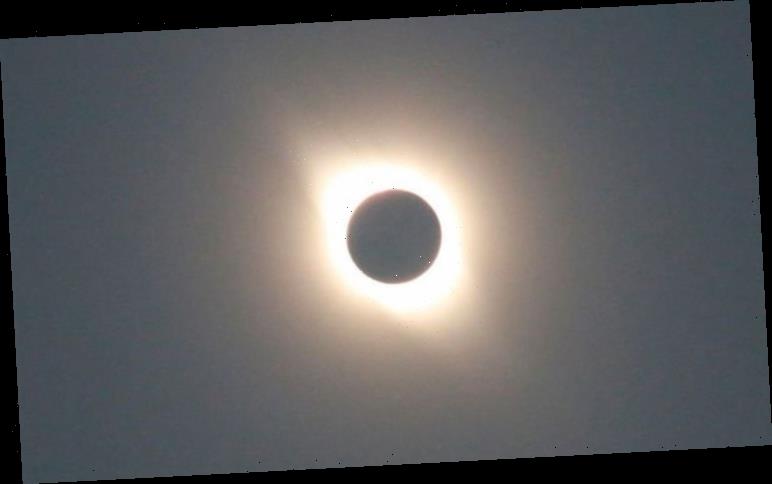On December 26, a “ring of fire” eclipse will put on a unique show for those in its path. But NASA has warned observers to be extra careful when viewing. NASA said: “Remember to never look directly at the Sun even during an eclipse.
“An annular eclipse occurs instead of a total eclipse when the Moon is on the far part of its elliptical orbit around the Earth.”
Sky at Night Magazine reiterated NASA’s warning: “It’s the most beautiful type of partial solar eclipse, but it’s also the most dangerous.
“All observers will need to wear solar eclipse glasses at all times, and attempts to photograph it will require special solar filters.”
The fiery eclipse is known as an annular eclipse and just like a total solar eclipse, they only occur when a new Moon passes in front of the Sun.
However, they differ in the fact that with an annular eclipse, the Moon will have a spectacular fiery halo larger than the usual eclipse faire.
The event will be visible along a narrow strip on the Earth’s surface, although more should be able to see the partial eclipse.
If you are in Eastern Europe, Asia, India, northwest Australia, eastern Africa, and the Arab states of the Persian Gulf you should have a good chance of witnessing the rare event.
If you are not in those areas, you can watch the event on numerous live online streaming platforms.
JUST IN: NASA: How space agency is ‘pushing physics boundaries’
The eclipse itself will only last three minutes and forty seconds.
Remember, if you are able to witness the event first hand, do not look directly at the Sun with the naked eye.
The next annular solar eclipse comes on June 21 next year, falling on summer solstice.
Those in Africa and Asia will be able to see the next one.
DON’T MISS
NASA breakthrough: Boeing’s faulty spacecraft returns home and make… [LATEST]
Asteroid WARNING: Dinosaur-killing asteroid WILL hit Earth again [UPDATE]
Alien life? Earth-like planet discovered – HUGE boost in hunt for ET [INSIGHT]
However, after that, North America gets a double whammy of annular solar eclipses, with two visible there in the next two years.
June 10, 2021, will see an Arctic annular solar eclipse take place, which will be visible in northern Ontario, northern Quebec and, more specifically, the vast Polar Bear Provincial Park, while the northeastern states of the US will also catch a glimpse.
Following that, an all-American annular solar eclipse will occur on October 14, 2023, with Oregon, Nevada, Utah, Colorado and New Mexico witnessing a 95 percent eclipse of the Sun.
The event comes as SpaceX has promised to fix the light pollution form its Starlink satellites after numerous complaints from astronomers.
Starlink is SpaceX’s satellite broadband project that will eventually see tens of thousands of satellites orbiting the Earth to deliver internet to every corner of the globe.
Just 120 of the planned 42,000 small satellites have been sent into orbit but astronomers are already complaining Mr Musk has ruined their view of the stars.
However, astronomers have said the 120 satellites are already ruining their view, so when the full 42,000 are in orbit, the night’s sky could be completely ruined.
But SpaceX has listened to the complaints, and will begin working on solutions.
To start with, SpaceX president and chief operating officer Gwynne Shotwell said the next batch of satellites sent up will have a “coating on the bottom” which could stop light reflection.
Source: Read Full Article






